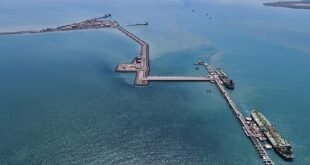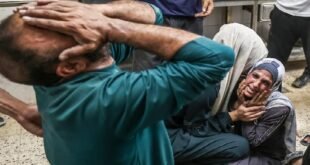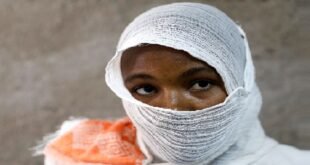17-03-2023
VIENNA/ UNITED NATIONS/ TRIPOLI: Two and a half tons of uranium have gone missing from a site in Libya, the UN’s nuclear watchdog has said.
The International Atomic Energy Agency (IAEA) sounded the alarm after a visit by its inspectors to the undisclosed site earlier this week.
 They found that 10 drums containing uranium ore had disappeared, the IAEA said.
They found that 10 drums containing uranium ore had disappeared, the IAEA said.
There are fears the uranium could pose a radiological risk as well as nuclear security concerns.
The IAEA said that the site where the uranium was stored was not in government-controlled territory.
In a statement, the organization said it would conduct further activities “to clarify the circumstances of the removal of the nuclear material and its current location”.
It is unclear when the uranium went missing or who could have taken it but it was removed from a “very remote location in southern Libya,” according to Scott Roecker from the Nuclear Threat Initiative, a global security organization working on nuclear issues.
“If you’re removing this material from this location you must really want it,” he told during a TV talk show, adding that the quantity that appears to have been taken is “approximately one tenth of the amount of material” stored at the facility “so you would absolutely see it missing”.
 The IAEA told media it was working to clarify what happened, how the nuclear material was removed and where it was now but, at this stage inspectors fear the loss of knowledge about where the nuclear material is could pose a radiological risk as well as nuclear security concerns.
The IAEA told media it was working to clarify what happened, how the nuclear material was removed and where it was now but, at this stage inspectors fear the loss of knowledge about where the nuclear material is could pose a radiological risk as well as nuclear security concerns.
However, the material “in its current form [known as yellow cake] cannot be made into a nuclear weapon, so there’s no concern that there’s enough material that could be used in a nuclear weapon right now”, Roecker said.
Also, there “are very little radiation concerns with the material as it is today”, he added.
The IAEA explained reaching the site has been complicated in recent times.
Inspectors had wanted to visit the location last year, but the trip had to be postponed because of fighting between different Libyan militias.
In December 2003, Libya publicly renounced nuclear, biological and chemical weapons and agreed to restrict itself to the possession of ballistic missiles with a range of no more than 300 km but, since Libya’s former leader Colonel Muammar Gaddafi was deposed in 2011, the country has been divided into competing political and military factions.
 It is now split between an interim government in the capital Tripoli and another one in the east led by Gen Khalifa Haftar.
It is now split between an interim government in the capital Tripoli and another one in the east led by Gen Khalifa Haftar.
Libya in 2003, under leader Muammar Gaddafi, renounced its nuclear, chemical and biological weapons program after secret discussions with the United States and United Kingdom. Gaddafi’s regime had obtained centrifuges that could enrich uranium as well as design information for a nuclear bomb, though the country made little progress towards creating a nuclear weapon.
Since a NATO-backed uprising and Gaddafi’s fall in 2011, the country has been beset by political crises and competing militias forming opposing alliances backed by foreign powers. Political control in the country remains split between a nominally interim government in the capital Tripoli in the west and another in the east backed by military strongman Khalifa Haftar.
The last major armed confrontations only ended in 2020 and sporadic fighting continues. (Int’l News Desk)
 Pressmediaofindia
Pressmediaofindia




